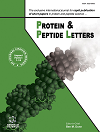- Home
- A-Z Publications
- Protein and Peptide Letters
- Previous Issues
- Volume 31, Issue 9, 2024
Protein and Peptide Letters - Volume 31, Issue 9, 2024
Volume 31, Issue 9, 2024
-
-
Investigation of the Expression and Regulation of SCG5 in the Context of the Chromogranin-Secretogranin Family in Malignant Tumors
More LessAuthors: Weisong Zhang, Rui Wang, Zhongquan Yi, Rongqi Guo, Yangyang Li, Yanhan Xu, Xia Li and Jianxiang SongThe SCG5 gene has been demonstrated to play an essential role in the development and progression of a range of malignant neoplasms. The regulation of SCG5 expression involves multiple biological pathways. According to relevant studies, SCG5 is differentially expressed in different cancers, and its up- or down-regulation may even affect tumour growth, invasion, and migration, which caught our attention. Therefore, Read More
-
-
-
Neuropeptide Network of Polycystic Ovary Syndrome – A Review
More LessBackgroundPolycystic Ovary Syndrome (PCOS), the ubiquitous reproductive disorder, has been documented as highly prevalent (6-9%) in India. 10% of women globally are predicted to have the disease. The highly mutable endocrinopathy, with differential clinical criteria for each diagnosis of PCOS, can mask the severity of the syndrome by influencing the incidence and occurrence of PCOS.Area CoveredWhen there is a solid t Read More
-
-
-
Revealing the Molecular Signatures of miR-185-5p on Breast Cancer Cells Using Proteomic Analysis
More LessAuthors: Vildan Torun, Elif Değerli and Demet Cansaran-DumanBackgroundBreast cancer is a heterogeneous type of disease in which genetic and environmental factors play a crucial role. There are several types of treatment for breast cancer (BC) patients. However, the biggest problem in the treatment of breast cancer is the resistance that occurs during the treatment with chemotherapeutic agents. Usnic acid, a secondary metabolite of lichen, has been identified as a drug candida Read More
-
-
-
Immunogenicity and Neutralization Potential of Recombinant Chimeric Protein Comprising the Catalytic Region of Gp63 of Leishmania and LTB against Leishmania donovani
More LessAuthors: Anuja Krishnan, Gunjan Malik and Lalit C. GargAimTo study the inhibition potential of antibody against a recombinant chimera comprising of the catalytic epitope of gp63 of Leishmania donovani and B subunit of heat-labile enterotoxin (LTB) in the functional activity of L. donovani.BackgroundVisceral leishmaniasis, caused by the protozoan parasite Leishmania donovani, is a major health problem and causes mortality in tropical regions. Protozoan proteases play a crucial rol Read More
-
-
-
Association between Higher Expression of Vav1 in Hepatocellular Carcinoma and Unfavourable Clinicopathological Features and Prognosis
More LessAuthors: Weikang Ye, Jin Wang, Jie Zheng, Ming Jiang, Yinong Zhou and Zhixiang WuObjectiveThe aim was to investigate the potential relationship between Vav1 protein and prognosis in patients with hepatocellular carcinoma (HCC).MethodsSamples were collected from 96 patients with HCC. For each patient, cancerous tissue and adjacent non-cancerous tissue were obtained. The Vav1 expression levels in these tissues were determined using immunohistochemistry. Chi-square and Fisher's exact tests Read More
-
-
-
Investigating In silico and In vitro Therapeutic Potential of Diosmetin as the Anti-Parkinson Agent
More LessAuthors: Krishna Kumar Varshney, Jeetendra Kumar Gupta and Rajnish SrivastavaAimThis study aimed to investigate how diosmetin interacts with seven target receptors associated with oxidative stress (OS) and validate its antioxidant properties for the potential management of Parkinson’s disease (PD).BackgroundIn PD, the degeneration of dopaminergic cells is strongly influenced by OS. This stressor is intricately connected to various mechanisms involved in neurodegeneration, such as mitocho Read More
-
-
-
A Conserved Tryptophan (Trp10) at the Hydrophobic Core Modulates the Stability and Inhibitory Activity of Potato I Type Inhibitors
More LessAuthors: Xiaodong Cui, Jiahui Shen, Jiajie Wang, Chen Li, Fang Li and Jiao LiBackgroundDifferent inhibitor families have their own conserved three-dimensional structures, but how these structures determine whether a protein can become an inhibitor is still unknown. The buckwheat trypsin inhibitor (BTI) pertains to the Potato I type inhibitor family, which is a simple and essential bio-molecule that serves as a model for the investigation of protease-inhibitor interaction.ObjectiveTo study the effects of Read More
-
Volumes & issues
-
Volume 32 (2025)
-
Volume 31 (2024)
-
Volume 30 (2023)
-
Volume 29 (2022)
-
Volume 28 (2021)
-
Volume 27 (2020)
-
Volume 26 (2019)
-
Volume 25 (2018)
-
Volume 24 (2017)
-
Volume 23 (2016)
-
Volume 22 (2015)
-
Volume 21 (2014)
-
Volume 20 (2013)
-
Volume 19 (2012)
-
Volume 18 (2011)
-
Volume 17 (2010)
-
Volume 16 (2009)
-
Volume 15 (2008)
-
Volume 14 (2007)
-
Volume 13 (2006)
-
Volume 12 (2005)
-
Volume 11 (2004)
-
Volume 10 (2003)
-
Volume 9 (2002)
-
Volume 8 (2001)
Most Read This Month
Article
content/journals/ppl
Journal
10
5
false
en


